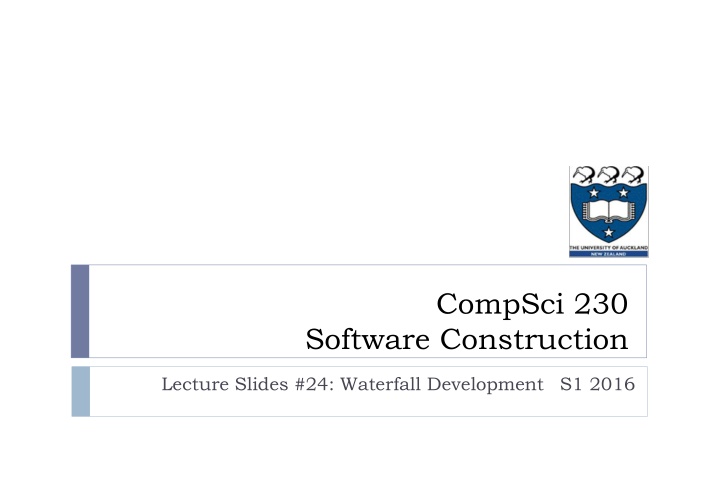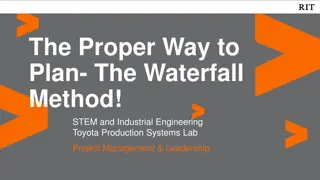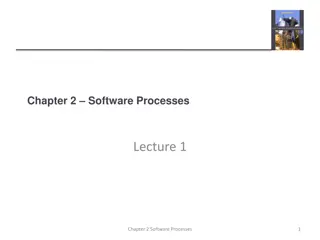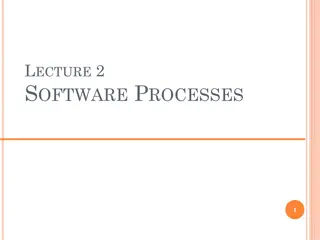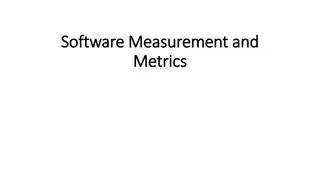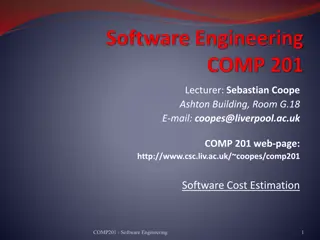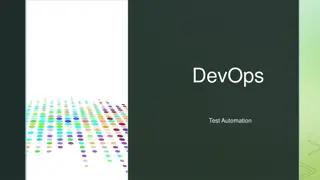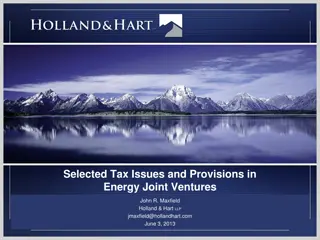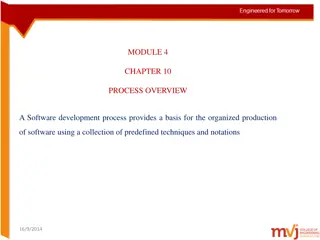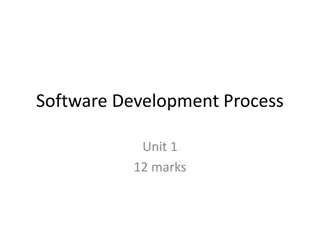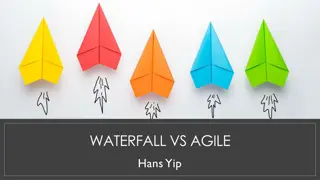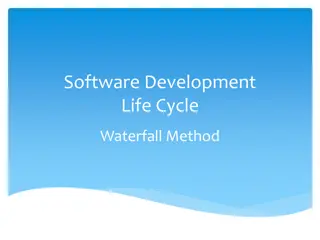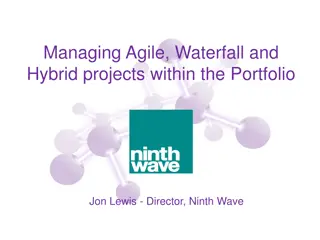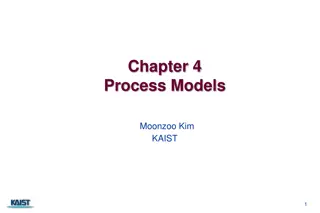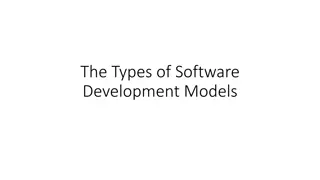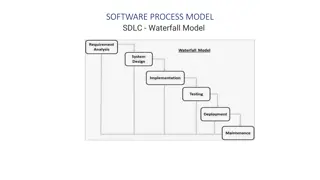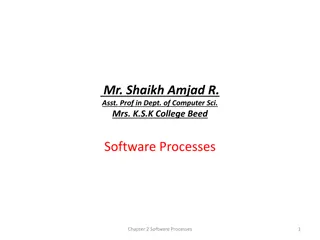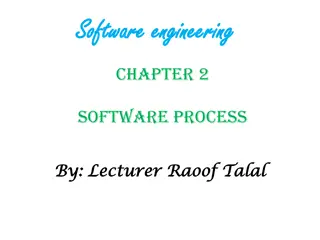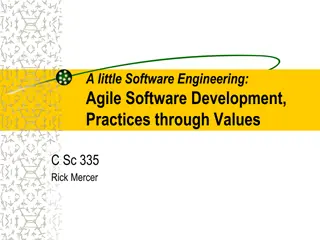Waterfall Model in Software Development: Explained
The Waterfall model, dating back to 1968, depicts software development as a linear multi-stage process where each stage must be completed before moving to the next. This structured approach involves stages like decision-making, design, development, testing, and implementation. Despite its benefits such as clear verification processes, the Waterfall model can pose challenges like lengthy implementation times and difficulty in accommodating changing requirements.
Download Presentation

Please find below an Image/Link to download the presentation.
The content on the website is provided AS IS for your information and personal use only. It may not be sold, licensed, or shared on other websites without obtaining consent from the author.If you encounter any issues during the download, it is possible that the publisher has removed the file from their server.
You are allowed to download the files provided on this website for personal or commercial use, subject to the condition that they are used lawfully. All files are the property of their respective owners.
The content on the website is provided AS IS for your information and personal use only. It may not be sold, licensed, or shared on other websites without obtaining consent from the author.
E N D
Presentation Transcript
CompSci 230 Software Construction Lecture Slides #24: Waterfall Development S1 2016
Agenda Topics: The Waterfall model of software development Testing under waterfall Pros and cons of waterfall development 2 CompSci 230: WF
The waterfall model Dates back to 1968! Models software development as a linear multi-stage manufacturing process Linear: stages follow distinctly after each other, each stage feeds into the next stage only, any iterations and feedback happen within each stage only Each stage must be completed before the start of the next stage Each stage is verified against the previous stage and then signed off No stage is complete without sign-off Think of a waterfall tumbling down over several stages Water flows downhill only First general attempt at software engineering 3 CompSci 230: WF
Stages of the waterfall process Decision stage Develop the business case Gather user requirements Write system specification (generally an SRS) Design stage System design Component design Development stage Build the components Demonstration stage Testing 1. a) b) Order of implementation c) 2. a) b) 3. a) 4. a) 4 CompSci 230: WF
Features, pros and cons of waterfall Each stage requires specific specialised skills (business analyst, system architect, developer, tester) Documentation plays a key role Stages can take a long time to implement Requirements may change during this period Resulting product may not be what is needed 5 CompSci 230: WF
Testing in waterfall Testing mirrors the (sub)stages, in reverse order Stage / Test: Component test: (unit test) verifies against component design Performed by developer or independent tester as white or black box test Challenges: see black box / white box testing Interface test (integration test): verifies against system design Performed by developer(s) or independent tester Challenges: is understanding of interfaces correct? Tests of this type tend to throw up a lot of issues. System test: verifies against system specification Performed by dedicated tester(s) Challenges: Ideally ought to be done in a production-like environment, which is difficult to establish for testing only Acceptance test: verifies against user requirements Performed by customer or dedicated tester(s) Challenges: Ideally ought to be done in user environment, which can be difficult to establish for testing only Release test: verifies against business case Performed by customer and or specialised operations team in live environment Challenges: business risk of failures becoming apparent at this stage 6 CompSci 230: WF
Other types of testing Portability testing Generally done by code inspection (at component test level) or during integration / system testing as black box tests Challenges: tends to throw up a lot of issues requiring significant additional development work Smoke testing Superficial test of system before handover for proper system test to catch obvious faults Usability testing Performed with the help of users to see how quickly users learn and operate the system Load testing: ensure system can cope with expected maximum load. Challenges: replicating behavior of a large number of users, replicating physical environment (latency & bandwidth constraints) Stress testing: load testing to determine the maximum load that the system is able to support Regression testing Used during component, interface and system test to ensure changes to a previous version don t break functionality 7 CompSci 230: WF
Waterfall - challenges Non-overlapping nature of stages and tests means projects tend to take a long time Needs of stakeholders change over time What gets built may not be the right thing Reliance on documentation means that a large amount of documentation needs to be managed Documents are difficult to keep up to date and consistent Documentation doesn t capture informal knowledge of the actors in the various stages E.g., SRS contains lots of detail but may be relatively brief on big picture stuff because it requires domain knowledge, which developers may not have. So developers may fail to see the forest for the trees. 8 CompSci 230: WF
Review Which are the stages of the waterfall model? Which types of testing correspond to these stages? Name a few reasons that cause projects following the waterfall model to take a long time What are the advantages and risks of the waterfall model? 9 CompSci 230: WF
